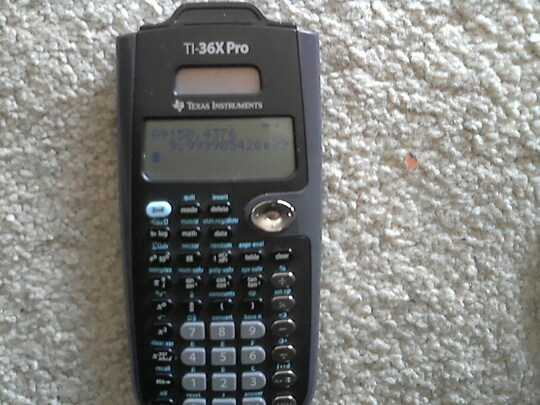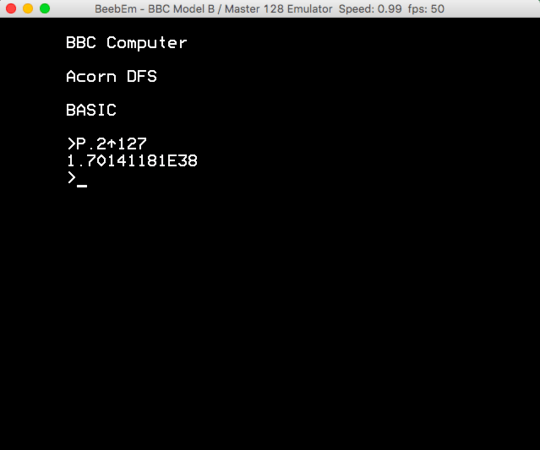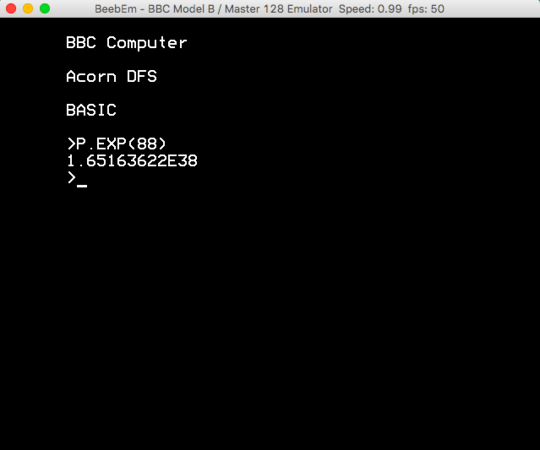77
11
Your goal is to print (to the standard output) the largest number possible, using just ten characters of code.
- You may use any features of your language, except built-in exponentiation functions.
- Similarly, you may not use scientific notation to enter a number. (Thus, no
9e+99.)
- Similarly, you may not use scientific notation to enter a number. (Thus, no
- The program must print the number without any input from the user. Similarly, no reading from other files, or from the Web, and so on.
- Your program must calculate a single number and print it. You can not print a string, nor can you print the same digit thousands of times.
- You may exclude from the 10-character limit any code necessary to print anything. For example, in Python 2 which uses the
print xsyntax, you can use up to 16 characters for your program. - The program must actually succeed in the output. If it takes longer than an hour to run on the fastest computer in the world, it's invalid.
- The output may be in any format (so you can print
999,5e+100, etc.) - Infinity is an abstract concept, not a number. So it's not a valid output.





6Exponentiation functions are not allowed, but ackermann function is allowed? That seems really arbitrary. It remains unclear why a symbolic manipulation is considered "calculating" the number. – Reinstate Monica – 10 years ago
1It would be fun to see this for each of 1..10 bytes. – None – 9 years ago
what about Aceto, where you can do: 9pppppppppppppppp (9 pushes 9 on the stack, and p prints out 9('0'*p)s – FantaC – 8 years ago
@Dennis It's not an estimate, it's an exact result, but it's a trivial conversion from Ackermann to arrow notation, like taking a square root and turning it into a negative exponent. Literally, ack(m,n) = 2 ↑ ⁽ᵐ⁻²⁾ (n+3) - 3 – user0721090601 – 6 years ago
4
Did you look at these two?
http://codegolf.stackexchange.com/questions/185/print-largest-integer-you-can-with-the-fewest-characters
http://codegolf.stackexchange.com/questions/18028/largest-number-printable
21What do you exactly mean by "calculate". Also,
If it takes longer than an hour to run on any computer in the world, it's invalid.is not objective. I could (theoretically) manufacture a computer that takes an hour to change one T-state – user80551 – 11 years ago@user80551 I clarified what I meant by "any". – Ypnypn – 11 years ago
@MadTux None of the top answers on those questions are valid here, since they either take millions of years to run, or are way longer than 10 characters. – Ypnypn – 11 years ago
1Do imports count to the 10 char limit too? – chill0r – 11 years ago
I've voted to close as "Too broad", for reasons which will be obvious if you read the answers to the first question linked by MadTux above. – Peter Taylor – 11 years ago
2@PeterTaylor Well, it is getting all sorts of entertaining answers, and the 10-character limit makes things interesting, so I'm beginning to like it. – MadTux – 11 years ago
4Does bit-shift count as an exponentiation operator since it is equivalent to
* 2^x? – Claudiu – 11 years ago@PeterTaylor: This is far less broad than that, though. There is actually a scoring criterion (the number), a program criterion (<= 10 chars), and a time limit (< 1 hour running time) – Claudiu – 11 years ago
1@Claudiu: "the output may be in any format" – Peter Taylor – 11 years ago
14The fact that the time limit depends on the performance of the fastest computer in the world makes it impossible for us to determine the set of valid answers... I don't really like that – David Z – 11 years ago
4@DavidZ: True. I'd like to see it changed to "1 hour on X computer", and also clarify the rules as to bit-shift, and whether other large built-in functions (e.g. ack in Wolfram) are allowed. I guess not the best question, but I enjoyed playing to the spirit of the rules – Claudiu – 11 years ago
3As I see it, the problem with
ackas used in the current Wolfram answers is that it doesn't calculate the result, it just estimates it. – Dennis – 11 years agoAre importing the libraries is counted as a code? – kenorb – 11 years ago
So you want the longest number possible in 10 bytes but not the largest number possible? – Anonymous Penguin – 11 years ago
I don't like the rules. I could have posted this
last [1..]. It extracts the last element of an infinite list. – gxtaillon – 11 years ago@Ypnypn One of the rules currently says, "you may not use scientific notation to enter a number". The rules appear to barely leave open the possibility for our code to use scientific notation inside a string literal. Is that so? I suppose
eval("9e9")still isn't quite as large as9999999999. – Keen – 11 years ago